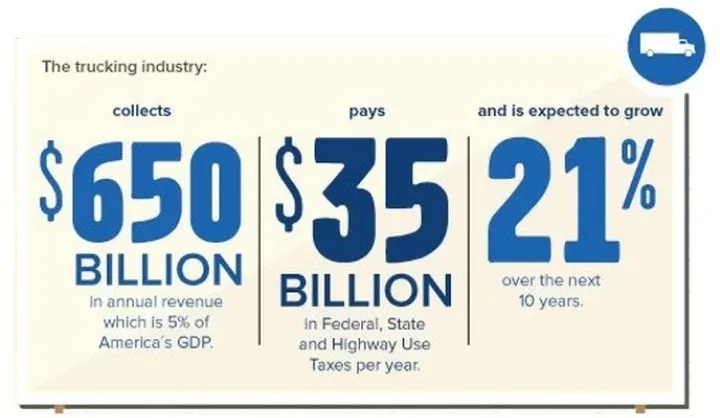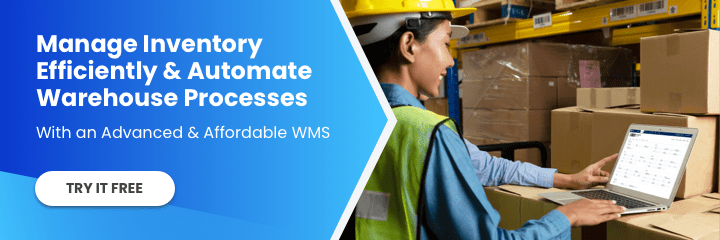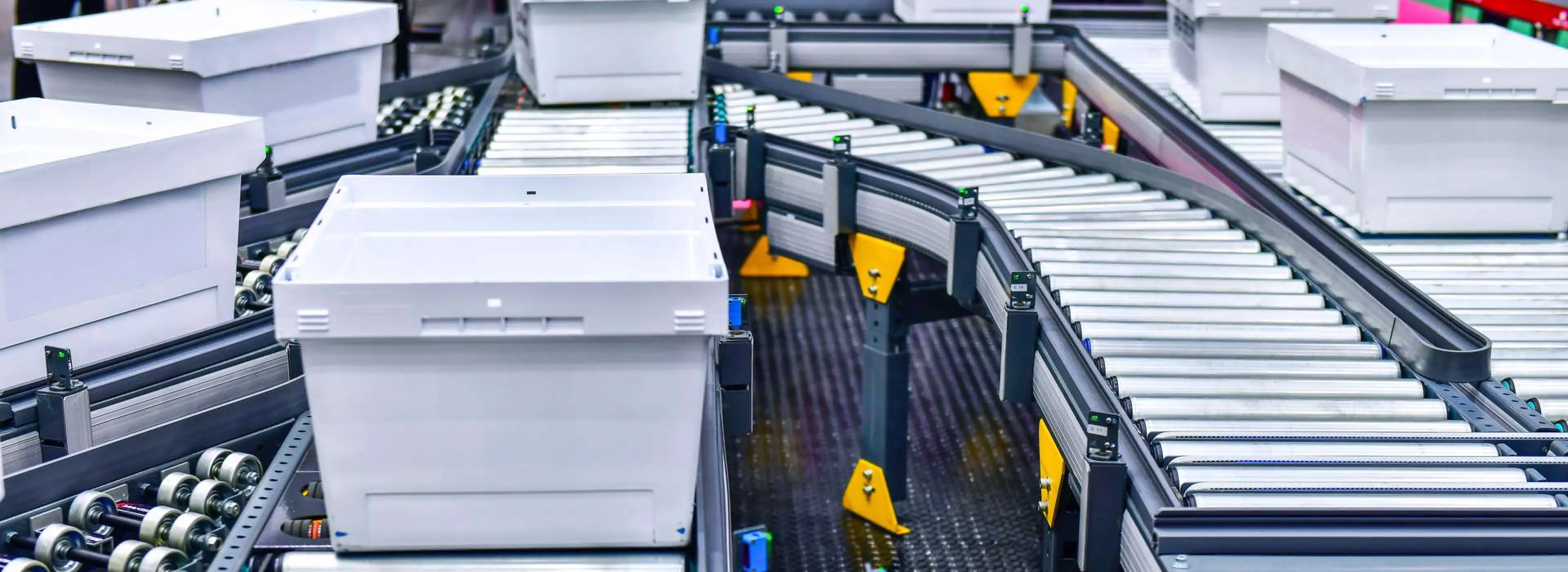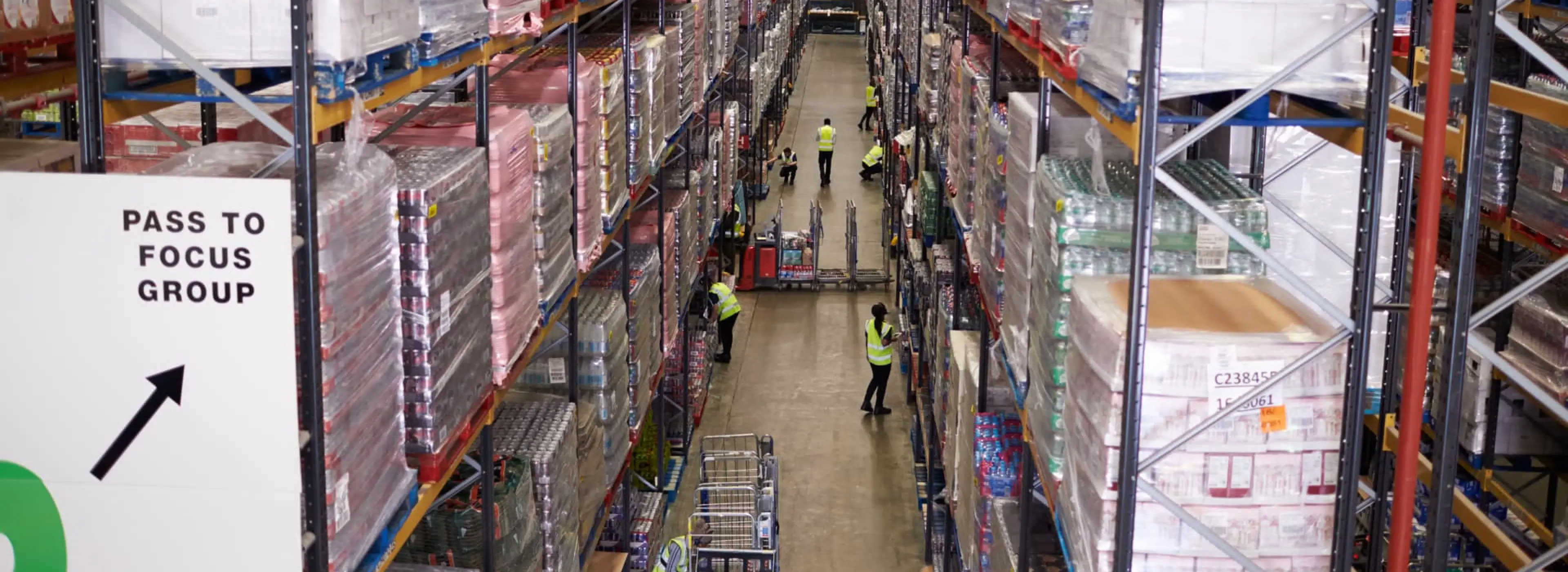An Uber Trucking supply chain model seems like the perfect answer to increasing efficiency, maximizing truck utilization, and reducing costs. Shippers connect directly with truckers, removing freight brokers from the transaction. Truckers maximize utilization by making sure that no truck drives empty, resulting in increased transportation efficiency.
Download Free Guide: 7 Technologies That Will Change the Warehouse
According to Business Insider, the U.S. trucking industry’s net worth is hovering around $650 billion (and growing). With the need to decrease transportation costs, it was just a matter of time before we started hearing about Uber trucking supply chain models popping up everywhere.

Source: Business Insider
The Uber Trucking Vision
It could not have been a better vision, an Uber-like business model for the trucking industry.
The premise was an Uber-like app/service that matches undesignated shipments with empty loads, thus connecting shippers and drivers while seamlessly removing the middleman – brokers.
This will ultimately lower costs and remove friction in freight transactions.
For truckers, this means no truck drives empty! Empty truckloads considerably increase costs, especially for smaller companies with fewer than 20 trucks.
As per the American Trucking Association (ATA), 97.2 % of carriers operate fewer than 20 trucks. An Uber-like platform addresses the issue of empty truckloads and optimizes capacity utilization.
For shippers, this means always having trucking capacity that meets destination, time, and financial needs. While simultaneously removing the intermediaries, decreasing transaction friction, and lowering costs.
You get to piggyback on a load already in transit and deliver goods at a considerably lower price.
The table is set! Well, not so fast.
Challenges and Realities
Despite the excitement, challenges, and realities settled in. The fact is that the cargo transportation industry is a lot more complex than the taxi industry.
1. Differences in Cargo
While Uber does not have limitations as to the type, size, or weight of the person that it needs to transport, the cargo transportation industry does. Not every cargo is the same, and on occasions, a specific cargo type will require a very specific type of truck.
For example, shipping electronics versus shipping food. While both are cargo, they require very different transportation needs in terms of truck type, ride time, and more.
2. The Trust Factor
There is very little room for error. The possibility of unreliable drivers and the increased chance of compromising the security and integrity of the cargo can bring down major trust issues with an Uber truck model. When hiring on-demand, you have no certainty that the cargo is in good hands or that the trucker will be on time – there is no history of success.
High-value cargo shippers might prefer to continue using well-trusted partners to move their cargo—peace of mind is worth the extra dollars. After all, the cost of damaging, losing, or not moving the cargo on time might be higher than the savings yielded by using an Uber-like model.
The bottom line is that the one-size-fits-all Uber-like model does not apply to the freight transportation industry.
Regardless of the challenges, a new Uber truck model has emerged to bring shippers and truck owner-operators closer, reduce intermediary costs, and increase supply chain visibility.
The Uber Trucking Metamorphosis
Welcome to the virtual broker! Virtual brokers are online freight marketplaces with mobile applications where shippers and carriers connect freight loads with on-demand trucking capacity.
“Mobile brokering will enable $26.4 billion of all truck freight movement revenues by 2025.”
Source: Uber for Trucks
This new virtual broker/online freight marketplace provides a load board platform where shippers can place the freight they need to be transported, and drivers can choose the cargo from the convenience of their smartphones. Our research indicates that the most successful of these online freight marketplaces are those that have specialized their services in specific niches
Benefits of using these virtual brokers/freight marketplaces:
For Shippers
- Access to trucking capacity on demand
- GPS tracking capabilities
- Real-time status updates
- Drivers Background Checks
- Desired destinations and prices
For Carriers
- Extra shipments and capacity maximization
- Real-time truck tracking capabilities
- Fast payments
- Increased profitability per mile driven
- Prefer destinations and prices
Some of the most recognized virtual brokers/online freight marketplaces that have made important inroads in this new form of Uber trucking business model include:
There is no doubt that the need to increase efficiency in the freight transportation industry was long overdue. The vision of an Uber-like business model combined with the size of the U.S. industry ($650 billion and growing) made it the perfect combination for the next revolution in freight transportation and the digitalization of trucking.
Although the adoption and evolution of this new technologically driven business model will continue, the benefits will undoubtedly outweigh the risks and/or limitations, and the systems will adapt to balance (or overcome) current challenges.
While the Uber model (one size fits all) does not fit the freight transportation industry, these new forms of virtual brokers/online freight marketplaces will put pressure on traditional freight brokers and shift the freight transportation industry into a new era – The Digitalization of Trucking.
To learn about warehouse technology trends, follow us on LinkedIn, YouTube, X, or Facebook. If you have other inquiries or suggestions, please contact us here. We’ll be happy to hear from you.












